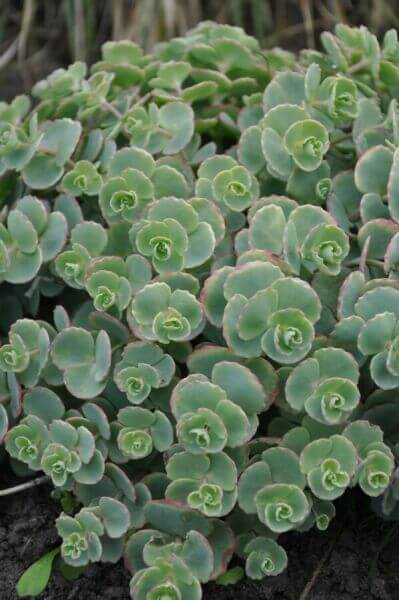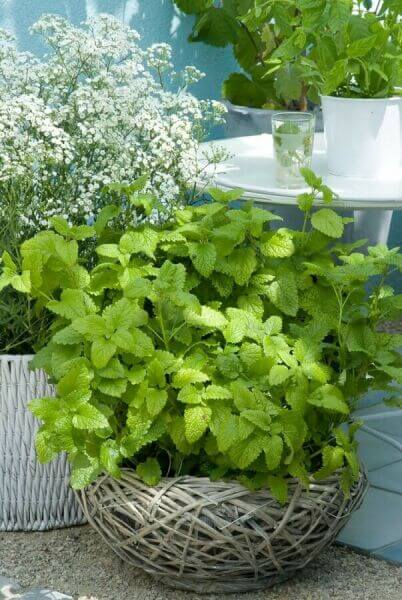Hedging Plants For Tall Screens
Hedging Plants For Tall Screens
Blog Article
Best Hedging Plants For Shape And Form
Enhance your garden's allure with lavish hedge ranges such as Yew (Taxus), Thuja, Laurel, Photinia, and Bamboo, celebrated for their structural integrity and environmental advantages.
Yew and Thuja offer evergreen protection and winter resilience, while Laurel provides fast growth and broad, fragrant leaves.
Photinia adds seasonal appeal with its lively red foliage, and Bamboo provides a low-maintenance, serene ambiance.
These hedges enhance air quality, lower sound, and develop tranquil, private areas.
Appropriate planting, spacing, and maintenance guarantee vigorous development and eco-friendly harmony.
Explore how these rich varieties can raise your garden's beauty and wellness.
Secret Takeaways
Change Your Garden With Lush Hedge Varieties
- Select Yew for its dense, evergreen growth and unrivaled durability.
- Go with Laurel for its fast growth and broad leaves, guaranteeing fast personal privacy.
- Pick Photinia for its vibrant seasonal foliage, which turns a striking dark red.
- Utilize Bamboo for a low-maintenance, winter-hardy hedge with aesthetic appeal.
- Space plants 2-3 per meter and prune frequently for optimum development and health.
Popular Hedge Plants
When transforming a garden with lush hedge varieties, it's important to think about popular hedge plants such as Yew, Thuja, Laurel, and Photinia due to their distinct qualities and advantages.
Yew (Taxus) is extremely respected for its durability and thick, green development, making it a prime option for sustaining landscapes.
Thuja is kept in mind for its evergreen foliage and robust winter season resilience.
Photinia adds seasonal vibrancy with red leaves that darken with time, developing vibrant visual appeal.
Laurel uses quick development and fragrant, broad leaves, suitable for quick privacy.
Additionally, Bamboo is an outstanding choice for ambiance, offering a low-maintenance, winter-hardy alternative that improves the garden's aesthetic with its stylish, swaying walking sticks.
These selections deal with a range of horticultural needs and preferences.
Advantages of Garden Hedges
Garden hedges use a wide range of benefits, making them an important addition to any landscape. These natural barriers are economical to implement and supply substantial wind security, enhancing air blood circulation and contributing to noise decrease. The dense foliage of hedges like Thuja and Beech makes sure personal privacy by obstructing presence, producing a secluded and tranquil environment.
Hedges also play a crucial function in microclimate regulation, supplying a stable environment that fosters plant development and lessens temperature variations. Their intricate leaf structures filter toxins, improving air quality and adding to a healthier garden environment.
Moreover, hedges stand out in sound decrease, absorbing and deflecting sound waves to lower ambient noise levels. This dual performance of providing both visual and acoustic privacy boosts the general tranquility and visual appeal of any garden.
Planting and Maintenance Tips
For an effective hedge, meticulous preparation of the planting location is crucial. Ensure the soil has proper pH and drainage to support strong root advancement.
Space the plants properly for the chosen species. Water the hedge regularly throughout its initial development stage, changing as required with seasonal modifications.
Execute a systematic insect control and illness avoidance strategy, using chemical or natural treatments when necessary. Routinely examine for aphids, termites, and fungal infections.
Apply mulch to maintain moisture and suppress weeds. Seasonal pruning promotes dense growth and air blood circulation, important for plant health.
Following these guidelines will help you cultivate a lively, well-maintained hedge that enhances the beauty of your garden.
Spacing and Trimming Standards
Spacing and Trimming Guidelines
Correct spacing and trimming are important for cultivating healthy, aesthetically appealing hedges. Adequate spacing ensures each plant receives adequate nutrients, light, and air flow.
Follow these standards for optimum hedge maintenance:
- Spacing: Position hedge plants 2-3 plants per meter to encourage robust growth.
- Pruning Techniques: Regular pruning is essential for maintaining desired hedge height and shape. Cut new growth in summer and cut down older wood throughout winter season.
- Seasonal Care: Change trimming schedules and techniques according to seasonal requirements to guarantee plant health.
- Hedge Height: Routinely monitor and cut to keep the preferred hedge height and achieve uniform aesthetics.
Adhering to these actions will ensure your hedge flourishes, enhancing both the appeal and performance of your garden.
Choosing the Right Hedge
Selecting the Right Hedge
Selecting the proper hedge includes assessing factors such as mature height, foliage density, and ecological durability. Successful hedge plant choice requires comprehending each species' growth characteristics and site-specific flexibility.
For instance, Yew (Taxus) offers exceptional longevity and thick growth, while Thuja is notable for its winter season resilience. Additionally, thinking about maintenance requirements is essential; fast-growing species like Laurel or Privet demand regular cutting, whereas low-maintenance alternatives like Bamboo or Ivy might be more suitable for those seeking minimal maintenance.
Environmental elements such as soil type, light schedule, and moisture conditions need to also direct the choice procedure. This mindful technique ensures the selected hedges will thrive, offering both practical and visual advantages to the garden landscape.
Delivery and Planting Suggestions
To ensure your hedge plants prosper, they need to be delivered by specialized couriers and planted without delay upon arrival.
Follow these essential steps for effective planting:
- Soil Preparation: Improve the soil with raw material to improve drainage and nutrient material.
- Planting Depth: Develop a trench twice the width and equal to the depth of the root ball.
- Watering Strategies: Water completely after planting, keeping the soil regularly wet but not saturated.
- Mulching: Apply a layer of mulch to keep moisture and suppress weeds.
Client Assistance and Service
Offered the crucial function of timely support in horticultural pursuits, our consumer assistance group is available six days a week through telephone, email, and social media to provide professional suggestions and promptly address any concerns. Their dedication to quick response times ensures customer complete satisfaction by dealing with inquiries associated with plant health, ideal planting techniques, and maintenance schedules.

Reaction Time
-----------------
6 days a week
Within two days
This comprehensive support system, strengthened by an outstanding 9.3/ 10 customer rating, highlights our dedication to boosting the gardening experience for every single customer.
Regularly Asked Concerns
The Length Of Time Does It Take for Hedge Plants to Establish?
Hedge plants generally require one to three years to become totally established, with the specific period varying by species and growing conditions.
Efficient care throughout this important duration is essential for robust growth. Consistent watering, alert weed control, and proper fertilizer application are essential in promoting strong root advancement.
For instance, fast-growing types like Laurel may develop faster, while slower-growing ranges such as Yew may take longer. Persistent maintenance accelerates the establishment procedure, leading to thick and healthy hedges.
What Are the Best Hedge Plants for Privacy?
The concern of the finest hedge plants for privacy involves evaluating evergreen and deciduous options.
Evergreen hedges like Thuja, Laurel, and Cypress provide year-round coverage, making sure constant personal privacy.
In contrast, deciduous hedges such as Beech offer seasonal personal privacy, shedding leaves in cooler months.
Key maintenance tips for personal privacy hedges include regular cutting, fertilizing in spring, and appropriate spacing-- typically 2 to 3 plants per meter.
In addition, constant watering and diligent weed elimination are important for promoting healthy, dense development.
Can Hedge Plants Draw In Wildlife to My Garden?
Yes, hedge plants can attract wildlife to your garden by offering important advantages like shelter, food, and nesting sites, therefore improving regional biodiversity. For circumstances, yew, holly, and laurel are excellent for bring in birds, while ivy supports a variety of pests.
However, it is necessary to note that there are some disadvantages, such as increased maintenance to manage bugs and regular maintenance. Thoroughly picking and maintaining hedge ranges can help balance these downsides and benefits, eventually fostering a dynamic and sustainable ecosystem in your garden.
Exist Any Flowering Hedge Plants Available?
Yes, there are flowering hedge plants readily available that can enhance the charm of your garden.
For instance, Elaeagnus, also known as Olive Willow, produces aromatic white flowers in the fall, including a touch of elegance.
Photinia, another popular choice, showcases dynamic red leaves that grow into an abundant green, creating a dynamic visual impact throughout the seasons.
To make sure these plants thrive, it's important to practice proper pruning techniques and seasonal upkeep, such as trimming new growth in the summertime and cutting back in the winter.
These procedures will help preserve the health and visual appeal of your blooming hedges.
How Do I Avoid Bugs in My Hedge Plants?
To prevent pests in hedge plants, employ natural pest control techniques and Additional hints preserve appropriate hedge care. Present beneficial insects like ladybugs, which prey on harmful pests, to create a balanced community.
Routinely examine your hedges for signs of infestation and immediately eliminate any afflicted parts to avoid the spread. Guarantee the health of your hedges by applying balanced fertilizers and providing adequate water.
Utilize mulching to maintain soil wetness and correct spacing to minimize plant stress and promote robust growth. These practices collectively assist in decreasing insect problems and maintaining a healthy hedge.
Conclusion
In essence, choosing the ideal hedge ranges such as Yew, Thuja, and Laurel can transform any garden into a tranquil sanctuary. These plants supply year-round greenery, enhance visual appeal, and deal practical advantages like sound reduction and wind protection.
Correct planting methods, accurate spacing, constant watering, and seasonal trimming are vital for optimum growth.
Reputable delivery services and skilled client support guarantee a seamless experience from purchase to planting, making it easier than ever to elevate your outside space.
Garden hedges use a plethora of benefits, making them an important addition to any landscape. These natural barriers are cost-efficient to execute and supply considerable wind protection, improving air circulation and contributing to sound reduction. The thick foliage of hedges like Thuja and Beech ensures personal privacy by blocking exposure, developing a peaceful and remote environment.

Pruning Strategies: Routine pruning is important for maintaining wanted hedge height and shape. Cut new development in summer season and cut back older wood during winter season.
Report this page